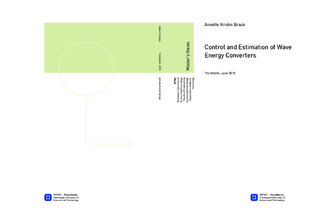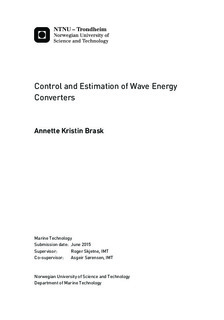| dc.description.abstract | The increasing scarcity of fresh water threatens the well being of both humans and the environment. Wave power desalination is a method of producing freshwater that has been in the developing stages since 1970. One of the concepts is Ocean Oasis which was studied during the DNV GL summer project, and it is also the subject of this thesis.
The main focus of this thesis has been on real-time control and estimation strategies which aim to increase the extracted power, thus the amount of fresh water produced. For real-time applications of marine structures the system dynamics must be modeled in time domain. This may cause challenges due to the convolution integrals which are a part of the model described by Cummins equation. Furthermore, for most control strategies developed for wave energy converters the measurement quantities must be predicted seconds into the future. This makes short-time prediction an important problem in the field of wave energy.
Earlier work on the topic includes a concept study on the effect of Latching control on the wave energy converter in regular waves. In this thesis the Latching control algorithm was extended for use in irregular waves and in real time. A system model was developed, where a linear time-variant parametric model of the fluid-memory effect was found. A method for calculating the non-causal excitation forces was studied. For prediction of the unknown control parameters an Extended Kalman filter was selected.
The structure dynamics, as well as control and estimation strategies were tested by simulations in MATLAB & Simulink. The uncontrolled model was validated to perform as expected. In addition, the control algorithm gave correct behavior. However, this resulted in neither an increase in efficiency nor a reduction in intermittency. Thus, it was concluded that Latching control is not a suitable control algorithm for the Ocean Oasis. The estimation algorithm gave satisfactory performance for low-medium noise levels (noise power of 0.01 - 0.1 m), with standard deviations in the range σ = 0:01 - 0:03 m for a sea state defined by Hs = 2:5 and Tp = 9:1. However, if the measurement noise was expected to contain higher levels of noise, the filter should be reconsidered or further developed. | |

